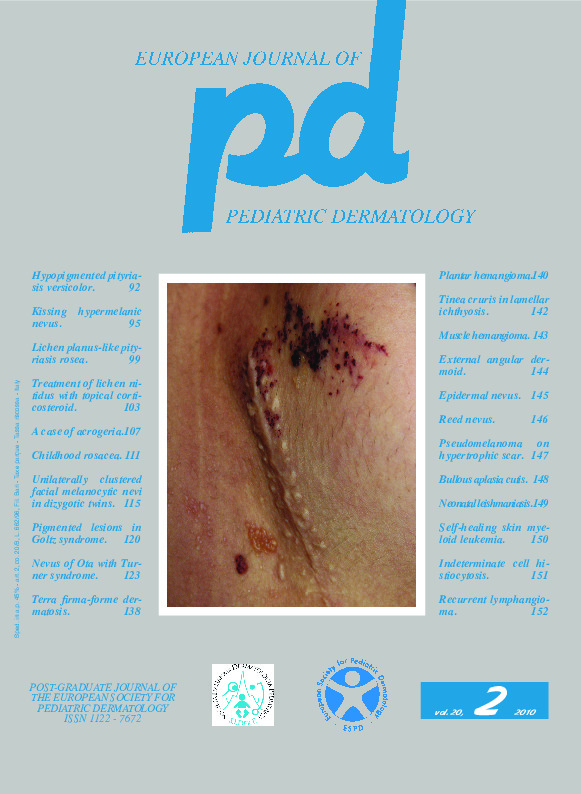Cutaneous-ocular external angular dermoid.
Downloads
How to Cite
Bonifazi E. 2010. Cutaneous-ocular external angular dermoid. Eur. J. Pediat. Dermatol. 20 (2):144.
pp. 144
Abstract
Dermoid cysts (DC) are ecto-mesodermal hamartomas, usually located along the embryonic fusion lines. DC consist of a cavity delimited by a keratinized epithelium and containing hairs and glands, sometimes lipids and other tissues. Subcutaneous DC can affect the periosteum and erode the underlying bone. DC can be associated with a sinus, from which hairs can come out. In children the most frequent sites of DC are the head, neck and breast. In the head, besides the external third of the eyebrow, other characteristic sites are the median line of the nose level with the bridge and the external angle of the eye. External angular dermoid (1) is usually sporadic, but it can affect more siblings (2). The best treatment is surgical operation, which should be radical in cases affecting the periosteum, in order to prevent relapses.Keywords
Cutaneous ocular external angular dermoid

